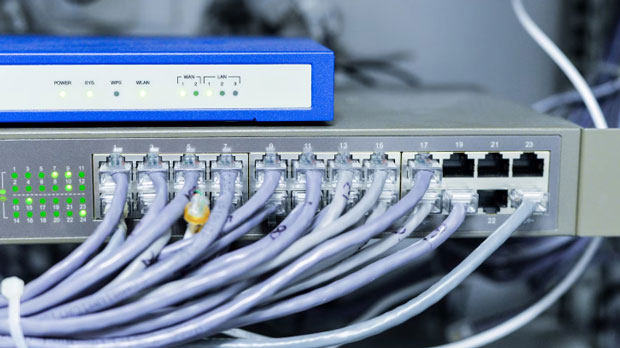Web scraping is an essential technique used for extracting data from websites in bulk. However, to ensure smooth and uninterrupted scraping, it is important to bypass restrictions that websites often impose on repeated access. One of the most efficient ways to achieve this is by using a dedicated socks5 proxy server. socks5 proxies are highly versatile and can be used to mask the real IP address of the scraper, prevent bans, and handle large-scale scraping projects with ease. In this article, we will explore how to set up a dedicated socks5 proxy server for your web scraping project, highlighting the key steps, technical aspects, and best practices to ensure a successful and scalable operation. Understanding Socks5 Proxy ServersBefore diving into the process of setting up a Socks5 proxy server, it is essential to understand what Socks5 proxies are and why they are particularly suitable for web scraping. Socks5 is a protocol that routes network packets between a client and server via a proxy server, allowing users to conceal their IP addresses and avoid detection. Unlike HTTP/HTTPS proxies, which are limited to handling specific types of web traffic (i.e., HTTP requests), Socks5 proxies are versatile and can support any type of traffic, including TCP, UDP, and other protocols. This flexibility makes Socks5 proxies particularly useful for web scraping, as they can handle large volumes of requests across multiple types of connections. Additionally, Socks5 proxies do not modify the data being sent or received, allowing for secure, uninterrupted communication with the target website.Advantages of Using a Dedicated Socks5 Proxy for ScrapingThere are several reasons why a dedicated Socks5 proxy is preferred for web scraping:1. Anonymity: By routing requests through a Socks5 proxy, the original IP address of the scraper is hidden, making it harder for websites to block or identify the scraper.2. Bypassing Rate Limits: Many websites impose rate limits on the number of requests a single IP can make in a given time period. Using multiple Socks5 proxies can distribute requests across different IP addresses, preventing rate limit triggers.3. Avoiding IP Bans: When scraping at scale, websites often block the IP addresses of scrapers to prevent excessive load. A dedicated Socks5 proxy ensures that requests come from different IP addresses, making it more difficult for websites to block the scraper.4. Improved Speed: Dedicated proxies can offer faster connection speeds and more reliable performance compared to shared proxies, which are often overburdened by multiple users.Steps to Set Up a Dedicated Socks5 Proxy Server for Web ScrapingSetting up a dedicated Socks5 proxy server involves several steps, ranging from choosing the right hardware or service provider to configuring the proxy on your scraping system. Let’s break it down into detailed steps:Step 1: Choose the Right Proxy Server SetupThe first step is deciding whether you want to set up your own proxy server or purchase a dedicated Socks5 proxy from a provider. If you choose to set up your own server, you will need a reliable machine (either physical or virtual) to host the proxy. This machine should have a stable internet connection and should be placed in a location where you can manage it effectively.Alternatively, you can purchase a dedicated Socks5 proxy from a provider, which can save time and effort. Providers typically offer easy-to-use interfaces for proxy management and a wide range of IP address options.Step 2: Set Up the Proxy ServerOnce you have chosen your setup, you need to configure the proxy server. If you are hosting the server yourself, you will need to install proxy software that supports the Socks5 protocol. Some popular open-source options include Shadowsocks or Dante.For example, with Shadowsocks, you would need to:1. Install the software on your server.2. Configure the server to listen for incoming requests on a specific IP address and port.3. Set up authentication (optional but recommended) to ensure only authorized users can access the proxy.4. Configure the firewall to allow traffic on the designated port.If you are purchasing a proxy from a service provider, they will typically provide you with all the necessary configuration details, including the server IP address, port number, and authentication credentials.Step 3: Configure Your Scraping Script to Use the ProxyOnce your Socks5 proxy server is set up, you need to configure your scraping script or tool to route its traffic through the proxy. Most popular web scraping libraries, such as Scrapy, BeautifulSoup, or Selenium, allow you to specify proxy settings in their configuration files.For example, in Python, you can use the `requests` library with the `socks` module to set the proxy:```pythonimport requestsimport socksimport socketsocks.set_default_proxy(socks.SOCKS5, "your_proxy_ip", your_proxy_port)socket.socket = socks.socksocketresponse = requests.get("http://pyproxy.com")```This configuration tells the script to route its requests through the Socks5 proxy server you have set up, ensuring that the requests appear to come from the proxy’s IP address.Step 4: Test the Proxy ConnectionBefore starting your scraping operation, it is important to test the proxy to ensure it is working properly. You can do this by sending a simple HTTP request through the proxy and checking whether the request is routed correctly.You can use tools such as curl or a custom Python script to verify that your proxy is functioning as expected. For example, a simple `curl` command to check the IP address would look like:```bashcurl --proxy socks5://your_proxy_ip:your_proxy_port https://pyproxy.org```This should return the IP address of your proxy server. If it does not, you may need to troubleshoot the server or proxy configuration.Step 5: Monitor and Optimize Proxy PerformanceOnce your proxy is operational and you begin scraping, it is important to monitor the proxy’s performance regularly. This includes checking connection speeds, ensuring there are no IP blocks, and handling potential issues like slow response times or downtime.You may need to rotate proxies periodically to avoid detection, especially when scraping large volumes of data. There are several techniques for rotating proxies, such as using a proxy pool, implementing a random delay between requests, or cycling through multiple Socks5 proxies.Best Practices for Using Socks5 Proxies in Web ScrapingTo ensure optimal performance and avoid detection, here are some best practices when using Socks5 proxies for web scraping:1. Proxy Rotation: Use a large pool of Socks5 proxies and rotate them frequently to avoid rate limits and bans.2. Respect Website Policies: Always check the website’s terms of service and robots.txt file to ensure compliance with their scraping rules.3. Randomize Request Timing: Avoid sending requests in quick succession, as this can trigger rate limiting or blocking mechanisms. Introducing random delays between requests can mimic human-like browsing patterns.4. Monitor Proxy Health: Continuously monitor the health of your proxy servers to ensure that they are not blocked or slow.ConclusionSetting up a dedicated Socks5 proxy server is a powerful and effective way to ensure that your web scraping project operates smoothly. By using a Socks5 proxy, you can mask your scraper’s IP address, bypass rate limits, and avoid detection, making it an essential tool for large-scale web scraping. However, proper setup and management are key to maintaining a successful scraping operation. By following the steps outlined in this article and implementing best practices, you can ensure that your project runs efficiently, reliably, and without interruption.
Jan 13, 2025
![arrow]()



























































